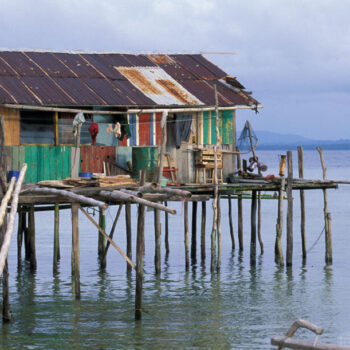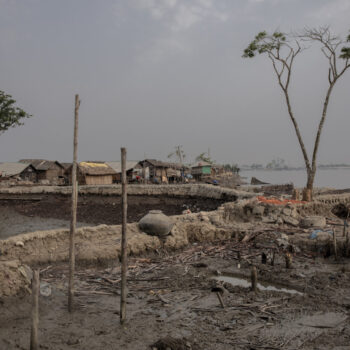Long-term thinking is key to ensuring money flows to projects that will make a zero-carbon world a reality.
2018 has been a year of record-breaking temperatures, heatwaves, and cyclones. This month, ahead of the U.N. climate negotiations (COP24), the Climate Vulnerable Forum takes place, where countries at risk of climate change are coming together to discuss climate ambition.
The Virtual Summit is hosted by the Marshall Islands – a country that may be overwhelmed by rising seas under climate change.
As the recent Intergovernmental Panel on Climate Change (IPCC) report explained, the world must get to net zero emissions if we are to stabilize the climate system. Climate impacts will be far worse if the temperature increase is 2 degrees Celsius, compared to a more ambitious 1.5C target. To reach the ambitious 1.5 degree target, the world needs to get to net zero emissions and 100 percent renewable energy by 2050.
A group of over 40 vulnerable countries have already committed to reach 100 percent renewable energy by 2050 – a pioneering and ambitious commitment. Development banks have committed to supporting long-term 2050 decarbonization, and World Bank officials are speaking at the summit.
This comes just a few weeks before the World Bank announces its post-2020 climate goals– an important opportunity to reaffirm its climate ambition. So how can development banks best support the transition to net-zero emissions?
Infrastructure plan
By 2050, we know the world will be facing huge challenges: a population of over 9 billion, with high demand for food, water, and energy, alongside growing climate impacts. The only way to meet this challenge will be by having a long-term vision.
Several development banks are supporting countries’ Paris Agreement commitments – but these only take us up to 2030. Development banks, including the World Bank, often support countries on short-term planning cycles, typically 3-5 years.
Short-term thinking can bring risks. Many development banks are still backing investments in fossil fuels which are not in line with a net zero-emission economy. Gas pipelines can have a lifetime of up to 80 years, and will not be needed if the world shifts to renewable energy.
What's more, in terms of transport, with a long-term perspective there is an opportunity to invest in metros or railways, rather than relying on petrol-powered vehicles that result in pollution and traffic.
In Asia, for example, road congestion already costs Asian economies an estimated 2–5 percent of GDP and there is a pollution crisis in many cities. The benefits of a long-term, strategic approach are clear.
Finally, energy efficiency is a crucial way to reach net-zero emissions – and it saves the energy consumer money. This will ease the task of reaching a 100 percent renewable energy system.
If development finance continues to go toward fossil fuels and related infrastructure, countries may become trapped in high-emitting pathways with much worse outcomes for health and the climate.
Best practices
The World Bank and others can support progress towards 100 percent renewable energy by supporting long-term planning, as well as integrating 2050 thinking into their own work across different sectors.
This is already starting to happen. The French Development Agency (AFD) will be 100 percent aligned to the Paris Agreement and will help partner countries define long-term climate strategies to 2050.
The Inter-American Development Bank is supporting deep decarbonization pathways in Latin America and the Caribbean, while the Asian Development Bank has supported some countries to develop pathways to low-carbon development.
Although most development banks are not supporting long-term planning, their finance inadvertently affect long-term pathways in any case. By providing funding for infrastructure with long lifespans – such as roads, pipelines, and buildings – development investments are locking countries into a certain pathway whether it’s intended or not.
To fulfil their mandate to help the poorest communities, these banks must think longer-term and consider how their own projects are aligned with a resilient pathway to net-zero emissions.
The 2050 Pathways Platform has been supporting countries developing long-term plans and could become a hub for coordination. However, it’s not clear to what extent the hub is currently used by development banks.
It would be great to hear more from the World Bank at the Climate Vulnerable Forum summit – including about how it will align its lending to a 1.5C future and support the pathway to 2050.
This article was originally published by the Thompson Reuters Foundation.


